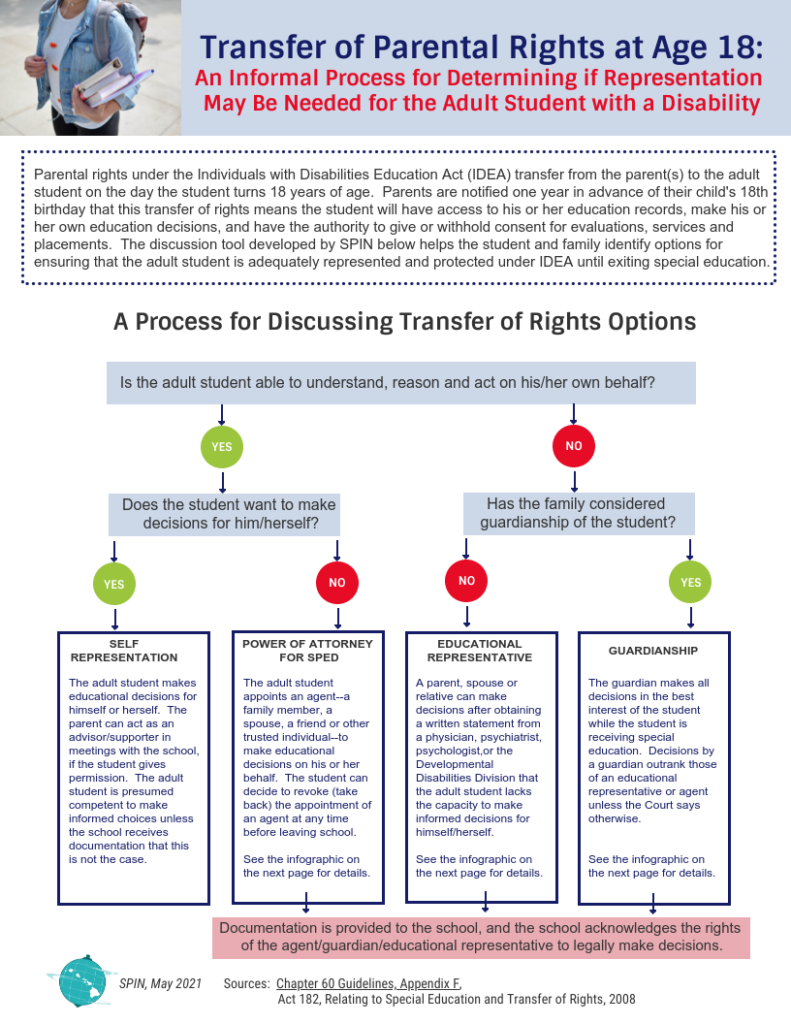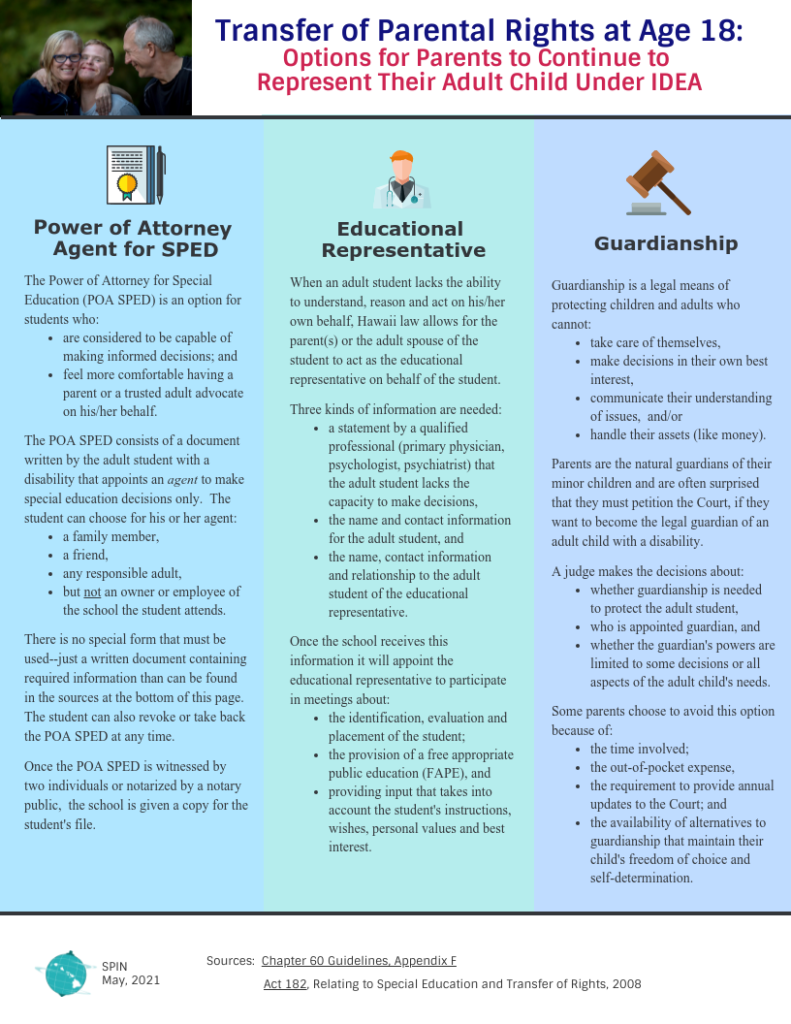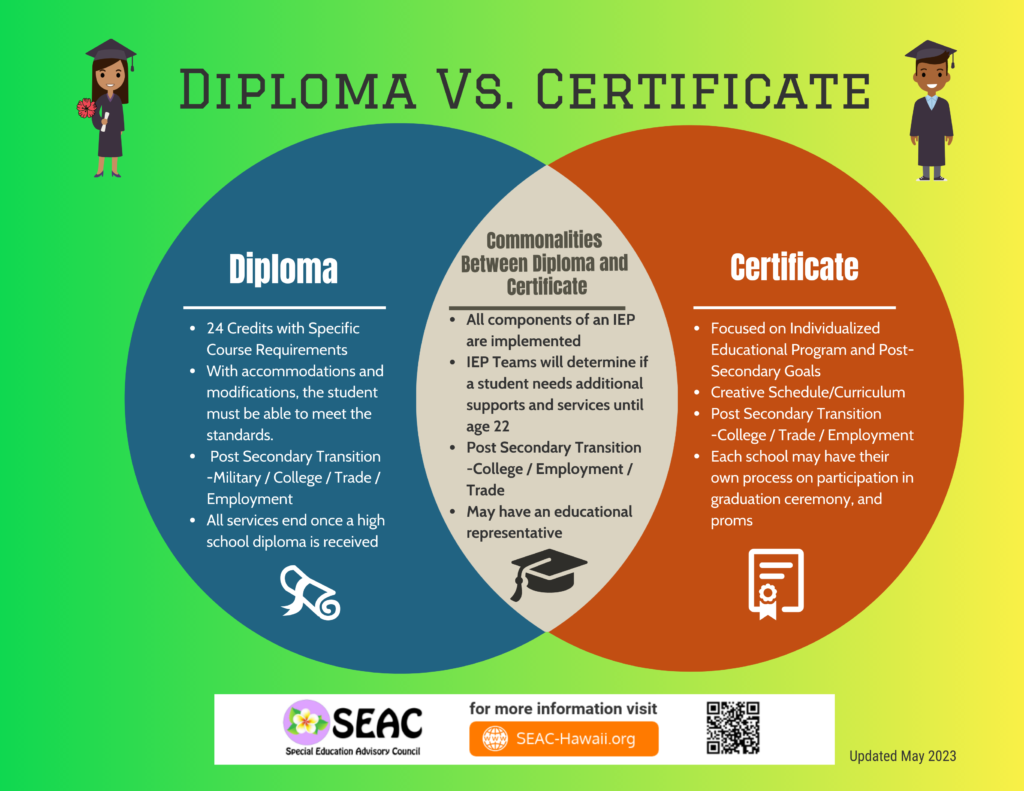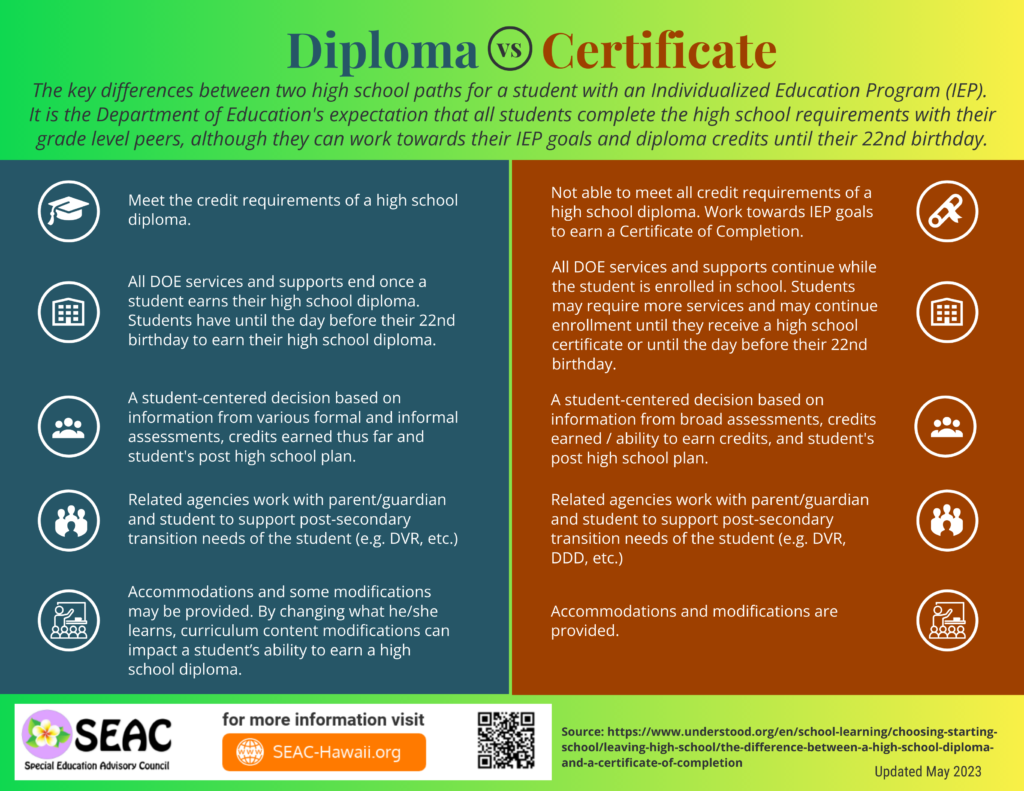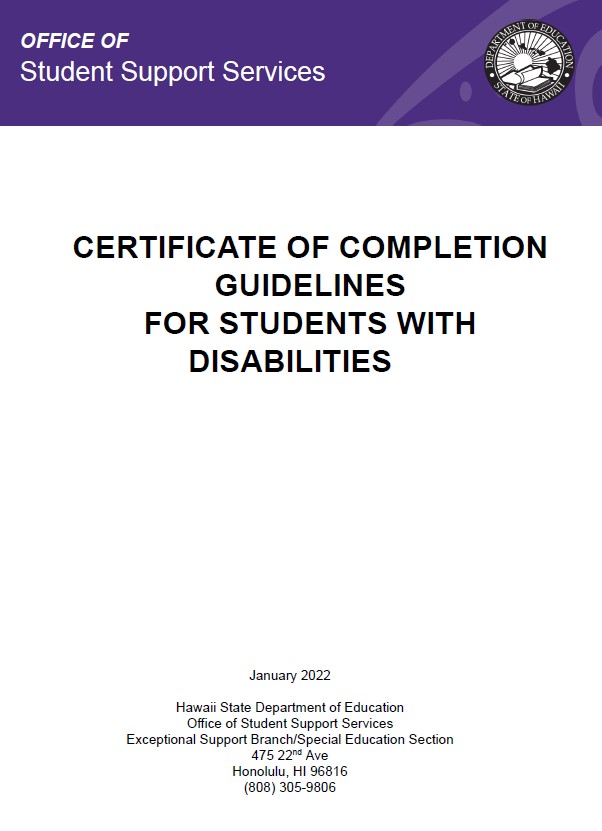Preparing our kids to move from high school into adult life and services takes time and preparation. The earlier we start, the better, but even if your getting a late start, there are resources and supports to help you plan for life after high school.
IDEA requires that for students, beginning no later than age 14, one of the purposes of the annual meeting will always be a discussion of transition service needs. Beginning at least by age 16, the discussion will focus upon planning for needed transition services. The school shall invite a student of any age with a disability to attend the IEP meeting if the purpose of the IEP meeting will be the consideration of transition services. This may include discussing what the student wants for his or her future, what needs or challenges are perceived as barriers to reaching student goals, and what accommodations and supports will support student efforts. This reflects the importance of self-determination for the student in conjunction with the shared responsibility of agencies and personnel in attaining the student’s long-and short-term goals. If the student does not attend the IEP meeting, the public agency shall take other steps to ensure that the student’s preferences and interests are considered. For more info on transition, check out the Parents Guide to Special Education section on Transition, and Hawaii’s Chapter 60, page 58.
Infographics
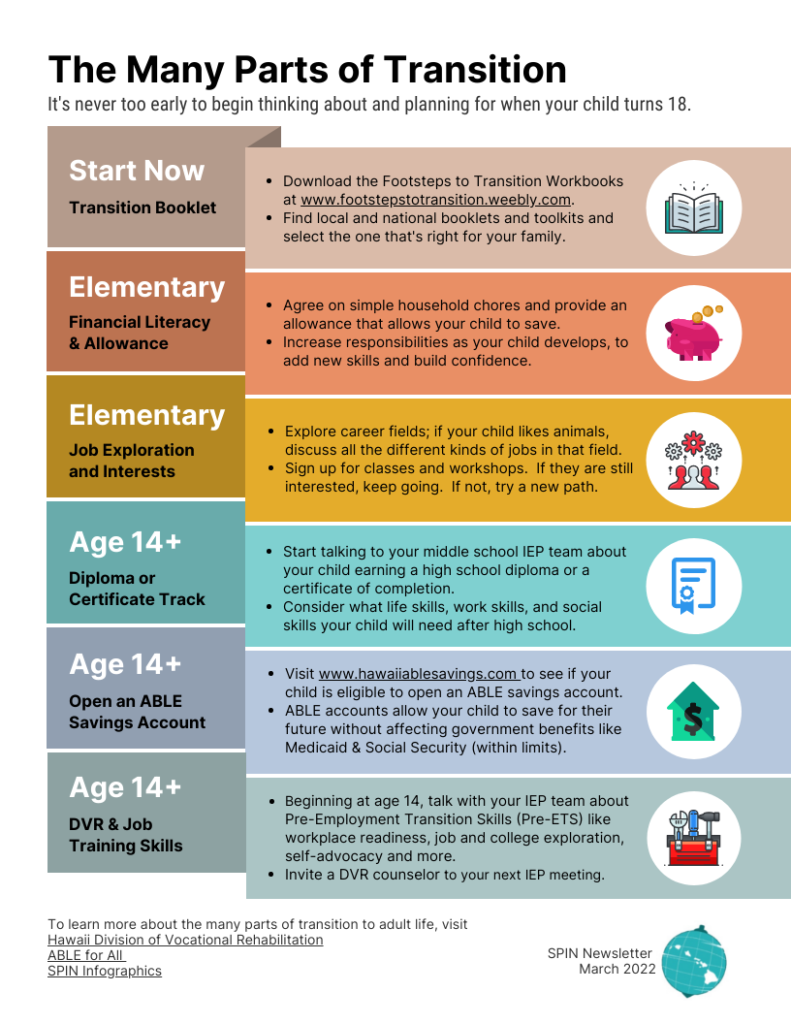
When you child turns 18 and is still enrolled in public school, you will need to decide who will contribute to the educational decisions on the IEP. There are 4 choices: Your child will represent themselves in IEP meetings and make all decisions, including related services. Parents or caregivers can get a signed Power of Attorney to continue to make educational decisions. If your child cannot make decisions for themselves, you can opt for being their Educational Representative or you can apply to the state for guardianship. Below you will find information so you can make the right choice for your family.
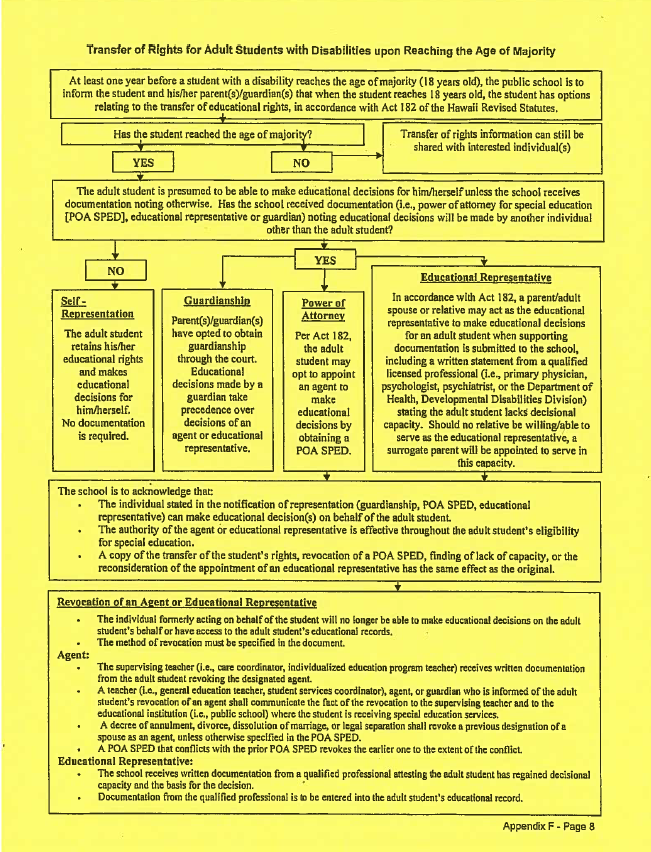
An important decision to make before your child enters high school is whether or not they will pursue a high school diploma or a certificate of completion. You can always start out working towards a diploma and change to a certificate program later, but it’s much harder the other way around. You child also has the option to take an extra year or longer to complete the requirements for a diploma. And if you decide on a certificate program, it does not exclude your child from taking regular education (inclusion) classes if they have an interest in taking them. These are conversations that should happen in middle school with your IEP team and with your child’s input. For Hawaii DOE graduation requirements, click here.
To find more awesome infographics around transition, click here.
Transition Workbooks & Toolkits
This is a handy tool to walk you through the many parts of transition, including getting and ID, registering to vote, planning for adult health services and more. You can also find more transition downloads from national sources on this page.
The Hawaii Department of Education has a transition handbook for parents and IEP teams to help make the process smoother.
The UH Center on Disability Studies created this comprehensive toolkit for families. It has several worksheets to help you plan for transition.
Workshops & Videos
Websites
There are a number of excellent website, both local and national, to help you with transition planning. Below are our favorites.
- Footsteps to Transition – provides local resources and videos for all things transition, including health care transitions and college and career planning.
- HIDOE Secondary Transition – lots of resource links for parents and teachers.
- Parent Center Hub – has a great transition page with lots of helpful resources.
- National Parent Center on Transition & Employment – Tons of videos, resources and family stories.
- Understood.org Transition Page – Breaks down different types of transition in parent friendly language.
- I’m Determined – has wonderful resources for youth, parents and educators with alot of useful tools, templates and videos.
Want to see more on this page? Email us at SPIN@doh.hawaii.gov and let us know what kind of resources would be helpful to you.






